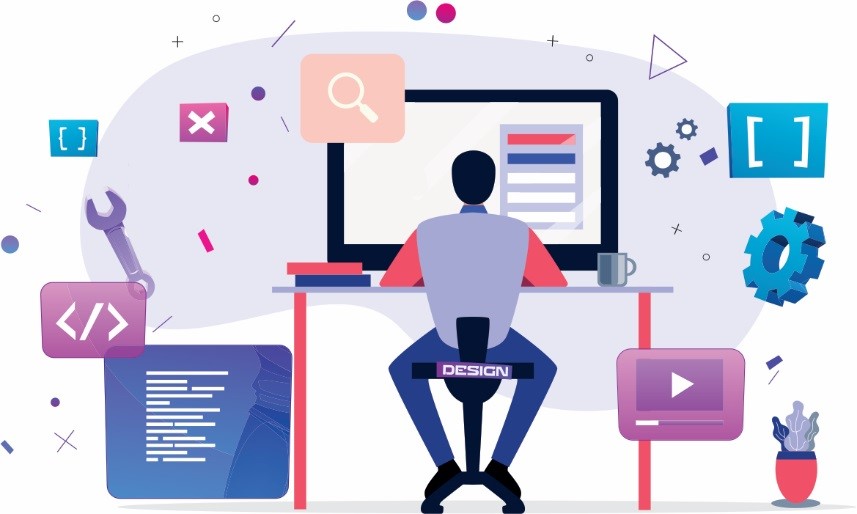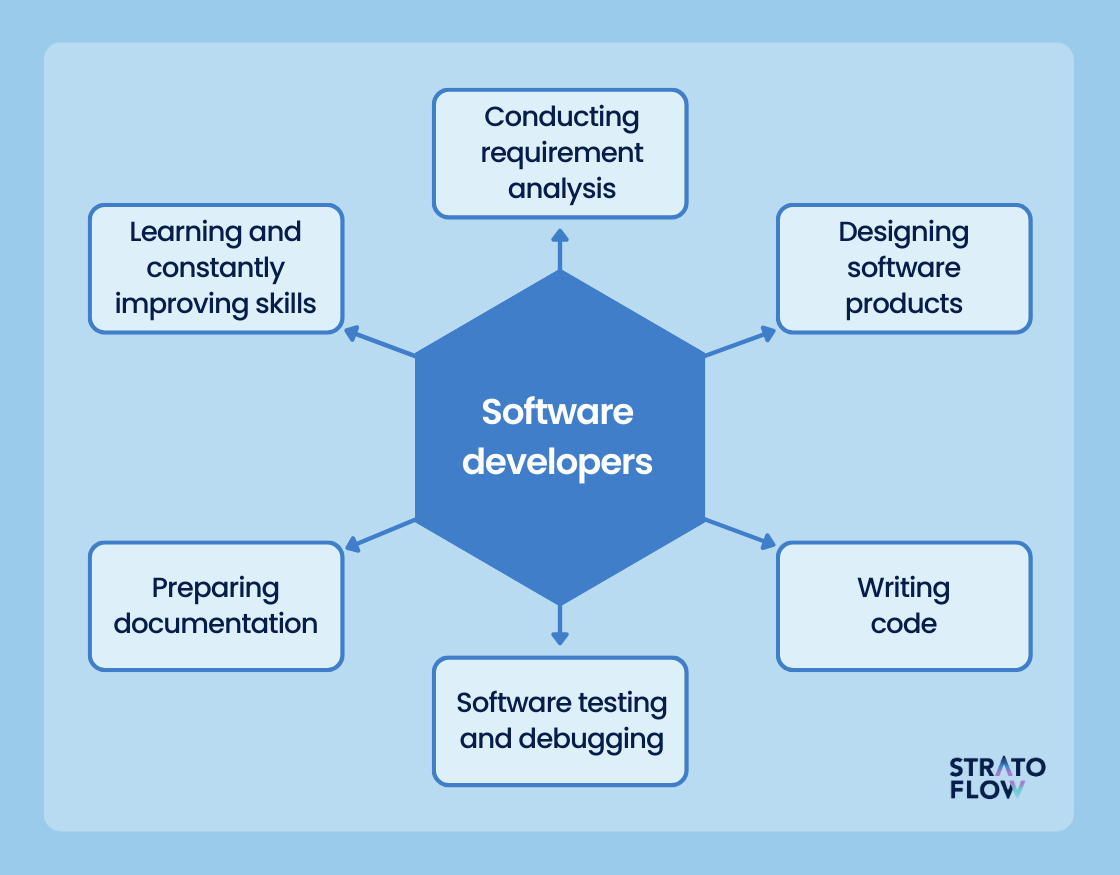Streamline Your Projects with Reliable Software Development Staff Augmentation
Streamline Your Projects with Reliable Software Development Staff Augmentation
Blog Article
Dedicated Developers vs. In-House Teams: Which Is Right for You?
The choice in between using dedicated designers and preserving an internal group is a substantial one that can influence the trajectory of your tasks and total organization method. Devoted programmers give a level of flexibility and specialized expertise that can be advantageous for specific, short-term initiatives. Conversely, in-house groups add to a natural firm society and a nuanced understanding of lasting goals. By analyzing important aspects such as spending plan, job range, and preferred control, you can better identify which method aligns with your organizational needs. However, the effects of this selection expand beyond immediate outcomes-- take into consideration the more comprehensive influence on your service landscape.
Understanding Devoted Designers
The expanding demand for specialized skills in the technology market has actually caused the development of dedicated designers as a sensible option for many companies. These professionals are commonly acquired on a task basis, allowing business to leverage certain knowledge without the lasting dedication related to permanent hires. Committed designers are usually embedded within a customer's group, offering adaptability and scalability to satisfy project requirements.
This model enables companies to access a worldwide talent pool, which is specifically beneficial in a quickly advancing technical landscape. Dedicated designers can be sourced from numerous geographical areas, ensuring that business can discover the appropriate skill set at competitive rates. They commonly bring a wide range of experience and knowledge, having dealt with diverse projects across different industries.
Furthermore, specialized programmers can concentrate specifically on the jobs at hand, enhancing productivity and efficiency. They are geared up to integrate perfectly into existing process, working together carefully with internal groups to achieve project objectives. This approach not just lowers the worry of employment and training however likewise permits companies to stay active, adapting rapidly to changing market needs and technical improvements.
Advantages of In-House Teams

Furthermore, internal teams have a tendency to have a much deeper understanding of the company's goal, values, and objectives. This positioning can improve employee involvement and motivation, as employee feel extra connected to their work and the company's success. In addition, having a devoted internal group enables better positioning of approaches and objectives, as these participants are consistently focused on the business's top priorities.
Internal groups additionally facilitate quicker decision-making processes, as they can respond much more quickly to adjustments and obstacles. The recognized connections and experience with business procedures permit for structured process and lowered miscommunication. Eventually, the mix of a natural society, positioning with business goals, and efficient communication makes internal groups a useful possession for lots of companies, specifically those wanting to grow lasting development and development.
Price Factors To Consider
When evaluating cost considerations, both dedicated programmers and in-house groups present distinct economic implications for companies. Involving dedicated designers usually involves a pay-per-project or hourly price design, which can be cost-efficient for businesses with rising and fall job demands. This strategy permits for versatility in scaling resources up or down, ensuring that companies just pay for the solutions they need.
In comparison, in-house teams entail dealt with expenses, including incomes, Continued advantages, and overhead expenditures such as office and devices. While this model uses greater control and prompt accessibility of resources, it may bring about higher long-lasting expenses, specifically if the workload does not validate a full time team.
Moreover, business need to think about the surprise prices connected with employment and training of in-house employees, which can further strain spending plans. In many cases, the time and sources invested in taking care of an in-house team can detract from the company's core organization objectives.

Project Monitoring and Adaptability
Project administration and flexibility are vital factors that affect the choice between internal groups and dedicated programmers. Devoted teams often have developed procedures for managing jobs properly, leveraging particular techniques like Agile or Scrum, which facilitate iterative development and flexibility.

Eventually, the option in between internal teams and dedicated programmers depends upon the desired degree of flexibility and the specific job management needs. Business must examine their operational characteristics, project intricacy, and resource availability to figure out which option aligns finest with their strategic goals.
Making the Right Selection
Choosing the appropriate advancement approach-- specialized developers or internal groups-- calls for a cautious analysis of various aspects that straighten with a company's calculated goals. software development partner. Consider the nature of the job. Dedicated designers might be extra suitable if it demands specialized skills or a quick scale-up. On the other hand, internal groups can give better continuity and combination with existing workers.
Following, review your spending plan. Committed programmers usually offer a cost-efficient remedy for temporary jobs, while in-house teams might sustain higher long-term expenses as a result of wages, benefits, and overhead prices. Examine the level of control and collaboration desired; internal teams generally foster more powerful interaction and best creative websites alignment with firm society.
Furthermore, consider the time structure. If instant results are essential, specialized designers can be onboarded rapidly, whereas constructing an in-house group takes some time for recruitment and training. Weigh the long-lasting vision of your organization. If continual development is vital, buying an internal team might yield far better returns with time. Eventually, the choice rests on a detailed analysis of Read More Here these variables, ensuring placement with your company's operational requirements and overall goals.
Final Thought
Finally, the choice between specialized programmers and internal groups hinges on project demands and business goals. Committed developers offer versatility and specific know-how, making them ideal for temporary campaigns. Alternatively, internal teams grow a natural society and deeper alignment with long-lasting objectives. Cautious assessment of budget restraints, task timelines, and desired control levels is essential for determining the most ideal strategy, making sure positioning with tactical priorities and functional effectiveness.
The decision in between utilizing committed designers and maintaining an in-house group is a considerable one that can affect the trajectory of your jobs and overall service strategy.Job management and versatility are critical aspects that influence the option in between internal groups and devoted programmers. software development staff augmentation.In contrast, internal groups may stand out in maintaining a regular task management framework due to their knowledge with the organization's culture and long-lasting objectives. Committed designers frequently provide an economical remedy for short-term tasks, while in-house groups might sustain greater long-term expenses due to incomes, benefits, and overhead expenses.In verdict, the choice in between in-house teams and devoted designers pivots on job needs and business purposes
Report this page